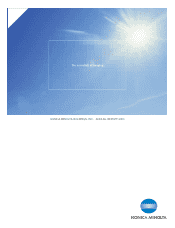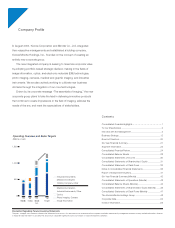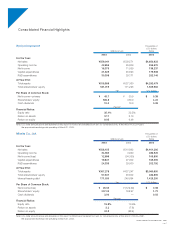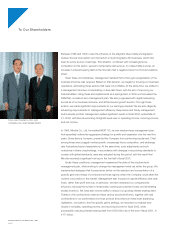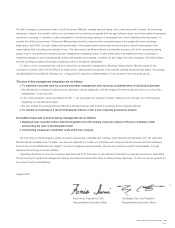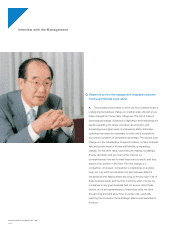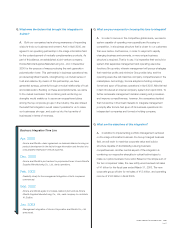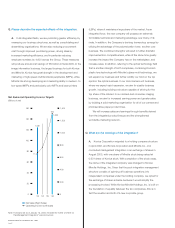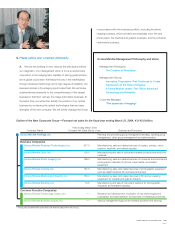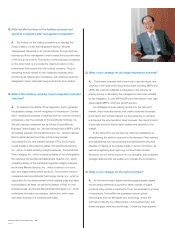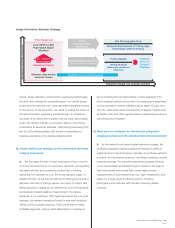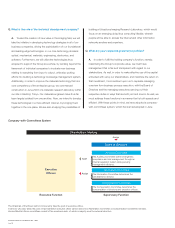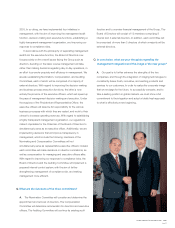Konica Minolta 2003 Annual Report Download - page 4
Download and view the complete annual report
Please find page 4 of the 2003 Konica Minolta annual report below. You can navigate through the pages in the report by either clicking on the pages listed below, or by using the keyword search tool below to find specific information within the annual report.
To Our Shareho ld ers
KONICA M INOLTA HOLDINGS, INC. 2 0 0 3
Pag e 2
Between 1998 and 1999, under the influence of the stagnant silver-halide photographic
market, Konica Corporation lost momentum in its photographic film business, which had
been its prime source of earnings. This situation, combined with increasingly fierce
competition in this sector, served to temporarily stall revenue. To make matters worse, an
increase in interest-bearing debt at the time also had a negative impact on Konica’s balance
sheet.
Given these circumstances, management decided that a thorough reorganization of the
business structure was required. Based on that decision, we began by focusing our business
operations, eliminating those sectors that were not profitable. At the same time, we shifted to
a management structure concentrating on free cash flows, with the aim of improving our
financial affairs. Using these accomplishments as a springboard, in 2000 we formulated the
SAN Plan, a medium-term management plan. We also progressed with digital networking
across all of our business domains, and shifted toward growth sectors. Through these
actions, we made significant improvements to our earnings potential. We are also diligently
advancing improvements to management efficiency. Responsive and timely management
and business portfolio management yielded significant results in fiscal 2002, ended March
31, 2003, with Konica recording its highest levels ever in operating income, recurring income,
and net income.
In 1999, Minolta Co., Ltd. formulated NEXT ’03, its new medium-term management plan,
that essentially outlined an aggressive strategy for growth and expansion over the next five
years. Some factors, however, prevented the Company from performing as planned. Chief
among these were sluggish market growth, increasingly fierce competition, and exchange
rate fluctuations beyond expectations. At the same time, such adjustments as book
reductions in share crossholdings, in accordance with changes in accounting standards to
comply with global standards, were also adopted during this period, with the result that
Minolta recorded a significant net loss in the first half of fiscal 2001.
Under these conditions, management reexamined the state of the medium-term
management plan, while working to change the management mind-set within the group. We
implemented strategies that focused even further on the selection and concentration of a
specific genre and lineup of products and those regions where the Company could attain the
number one position in the market. Management also focused on capital efficiency and cash
flows, rather than profit and loss. In particular, we have revamped our companywide
structure, reducing the number of employees, lowering procurement costs, and eliminating
excess inventory. We have also moved swiftly to reduce our growing interest-bearing debt.
Thanks to the contributions made by these various structural reforms, together with real
contributions to our performance by those product lines where we have been advancing:
digitization, colorization, and the specific genre strategy, we recorded our highest-ever
results in net sales, operating income, and recurring income for fiscal 2002, while
successfully reducing interest-bearing debt from ¥250 billion as of the end of fiscal 2001, to
¥171 billion.
Fumio Iwai, President & CEO (Left)
Yoshikatsu Ota, Vice President (Right)

